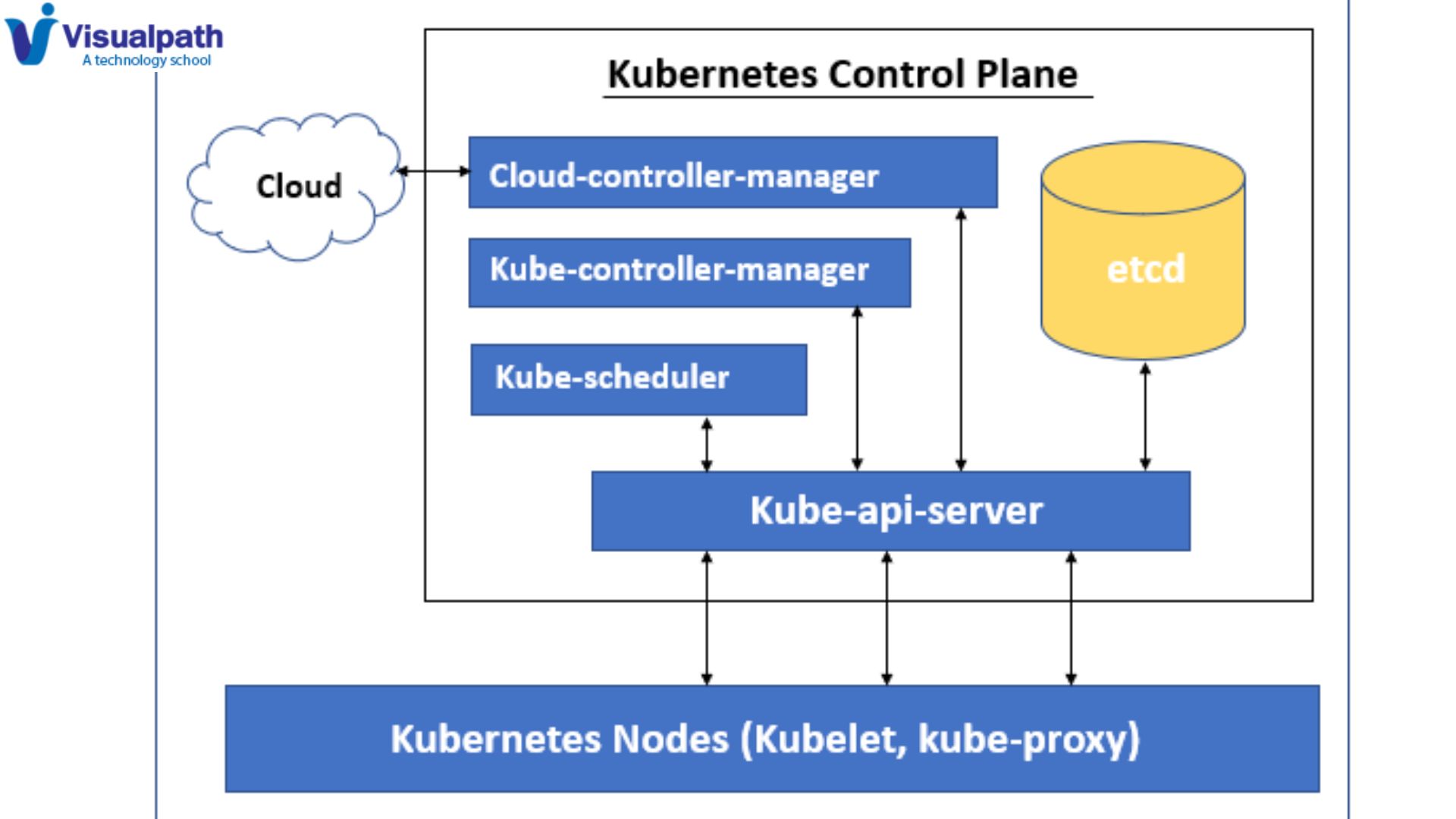The Key Components of Kubernetes: Control Plane and Compute Plane
Introduction:
Kubernetes has emerged as the leading platform for container orchestration, enabling organizations to efficiently deploy, scale, and manage containerized applications. At the heart of Kubernetes architecture lie two fundamental components: the Control Plane and the Compute Plane.
The Control Plane:
The Control Plane, also known as the Master Node, serves as the brain of the Kubernetes cluster, responsible for managing and coordinating all activities within the cluster. - Docker and Kubernetes Training
It comprises several key components, each playing a distinct role in ensuring the smooth operation of the cluster:
API Server: The API Server acts as the front-end for the Kubernetes control plane. It exposes the Kubernetes API, which allows users to interact with the cluster, define workloads, and query the cluster's state. All management operations, such as creating, updating, or deleting resources, are handled through the API Server.
Scheduler: The Scheduler component is responsible for assigning workloads to individual nodes within the cluster based on resource availability, constraints, and other policies. It ensures that workload placement is optimized for performance, reliability, and resource utilization, taking into account factors such as affinity, anti-affinity, and resource requirements. - Docker Online Training
Controller Manager: The Controller Manager is a collection of controllers that continuously monitor the cluster's state and drive the cluster towards the desired state defined by the user. These controllers handle various tasks, such as managing replication controllers, ensuring the desired number of pod replicas are running, handling node failures, and maintaining overall cluster health.
etcd: etcd is a distributed key-value store used by Kubernetes to store all cluster data, including configuration settings, state information, and metadata. It provides a reliable and highly available storage solution, ensuring that critical cluster data is persisted even in the event of node failures or network partitions. - Kubernetes Online Training
The Compute Plane:
While the Control Plane manages the orchestration and coordination aspects of the cluster, the Compute Plane, also known as the Worker Node, is responsible for executing and running containerized workloads.
It consists of the following key components:
Kubelet: The Kubelet is an agent that runs on each Worker Node and is responsible for managing the node's containers and ensuring they are in the desired state. It communicates with the Control Plane to receive instructions, pull container images, start/stop containers, and report the node's status.
Container Runtime: The Container Runtime is responsible for running and managing containers on the Worker Node. Kubernetes supports various container runtimes, including Docker, containerd, and cri-o, allowing users to choose the runtime that best fits their requirements. - CKA Training Online
Kube Proxy: Kube Proxy is a network proxy that runs on each Worker Node and facilitates network communication between services within the Kubernetes cluster. It maintains network rules and performs packet forwarding, ensuring that services can discover and communicate with each other seamlessly.
Conclusion:
In conclusion, the Control Plane and Compute Plane are two fundamental components of the Kubernetes architecture, working in tandem to orchestrate and manage containerized workloads efficiently.
Visualpath is the Leading and Best Institute for learning Docker And Kubernetes Online in Ameerpet, Hyderabad. We provide Docker Online Training Course, you will get the best course at an affordable cost.
Attend Free Demo
Call on - +91-9989971070.
Visit : https://www.visualpath.in/DevOps-docker-kubernetes-training.html


No comments yet